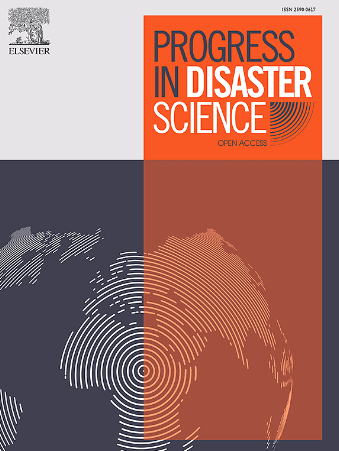Internally displaced in Tigray (Northern Ethiopia): Management and sustainability of shelter and settlement
IF 3.8
Q3 ENVIRONMENTAL SCIENCES
引用次数: 0
Abstract
Following the two-year war (2020−2022) in Tigray, Northern Ethiopia, more than two million people were internally displaced. A large number of internally displaced persons (IDPs) suffered precarious shelter and settlement conditions, resulting in unsafe, undignified, and substandard living environments. Construction of emergency shelter within a short timeframe, limited availability of humanitarian partners, logistical constraints, and scarce resources were among the major challenges. These issues were further exacerbated by the lack of a comprehensive assessment of shelter typologies, as well as traditional construction methods and settlement patterns. The aim of this study is to assess shelter typologies and construction systems, as well as to examine settlement characteristics, delivery, and management approaches. Particular emphasis is placed on innovative shelter solutions and sustainability. A multi-site case study, combined with within- and cross-case analysis, enabled the collection of both qualitative and quantitative data across multiple locations. Data were gathered through interviews, questionnaires, focus group discussions, on-site observations, and visual documentation, supported by a comprehensive literature review. The study identified sixteen distinct shelter typologies, each varying in design, construction methods, building materials, and longevity across four primary settlement morphologies.Settlements were created through IDPs self construction or direct by humanitarian partners.
提格雷境内流离失所者(埃塞俄比亚北部):住房和定居点的管理和可持续性
在埃塞俄比亚北部提格雷的两年战争(2020 - 2022年)之后,200多万人在国内流离失所。大量国内流离失所者的住所和定居条件岌岌可危,导致不安全、没有尊严和不合标准的生活环境。在短时间内建造紧急住所、人道主义合作伙伴有限、后勤限制和资源匮乏是主要挑战。由于缺乏对住房类型以及传统建筑方法和住区模式的全面评估,这些问题进一步加剧。这项研究的目的是评估住房类型和建筑系统,以及检查住区特征、交付和管理方法。特别强调创新的住房解决方案和可持续性。一个多地点的案例研究,结合内部和跨案例分析,可以在多个地点收集定性和定量数据。通过访谈、问卷调查、焦点小组讨论、现场观察和可视化文档收集数据,并辅以全面的文献综述。该研究确定了16种不同的庇护所类型,每种类型在设计、建造方法、建筑材料和四种主要住区形态的寿命方面都有所不同。定居点是通过国内流离失所者自建或由人道主义伙伴直接建立的。
本文章由计算机程序翻译,如有差异,请以英文原文为准。
求助全文
约1分钟内获得全文
求助全文
来源期刊

Progress in Disaster Science
Social Sciences-Safety Research
CiteScore
14.60
自引率
3.20%
发文量
51
审稿时长
12 weeks
期刊介绍:
Progress in Disaster Science is a Gold Open Access journal focusing on integrating research and policy in disaster research, and publishes original research papers and invited viewpoint articles on disaster risk reduction; response; emergency management and recovery.
A key part of the Journal's Publication output will see key experts invited to assess and comment on the current trends in disaster research, as well as highlight key papers.
 求助内容:
求助内容: 应助结果提醒方式:
应助结果提醒方式:


